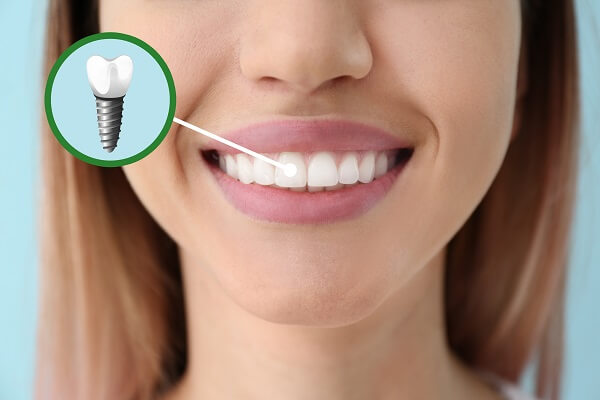What Do Dental Implants Look Like?
Dental implants are one of the most popular dental restorations for missing teeth. They offer a long-term, durable solution that looks and feels like natural teeth. But have you ever wondered what dental implants look like?
Table of contents
Anatomy of Dental Implants
Dental implants consist of three main parts:
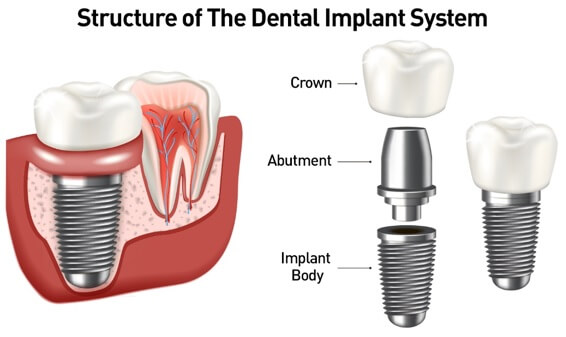
Implant
The post-like implant is often composed of titanium or another material that is biocompatible and is typically quite tiny. In order to successfully replace the lost tooth root, it must first be surgically implanted into the jawbone.
Abutment
The abutment is a connector that is attached to the implant and extends beyond the gum line. It can be thought of as an extension of the implant.
It plays a crucial role in the dental restoration by acting as the base.
Restoration
The restoration, often known as a crown, bridge, or denture, is the portion of the dental implant that is visible to the patient.
It is manufactured to order, so the color, size, and shape of the prosthetic will be identical to those of your original teeth.
Types of Dental Implants
There are several types of dental implants, including:
Endosteal implants
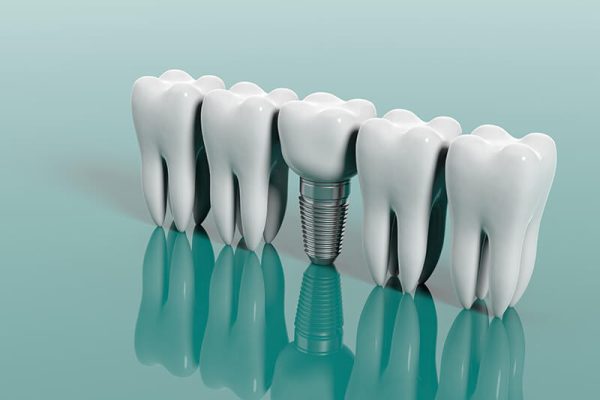
Endosteal implants are the kind of dental implant that are used the most frequently. They offer a strong foundation for a single crown, bridge, or denture and are inserted directly into the jawbone where they remain permanently.
Subperiosteal implants
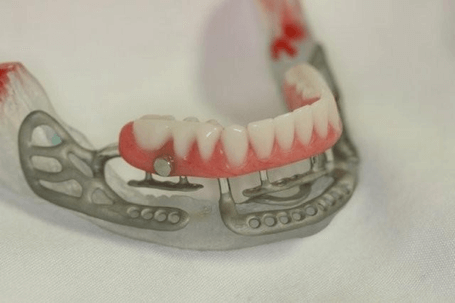
Implants that are subperiosteal are positioned across the jawbone and beneath the gum tissue to restore missing teeth.
Patients who have a shallow jawbone and are unable to undergo bone grafting are candidates for these implants.
Zygomatic implants
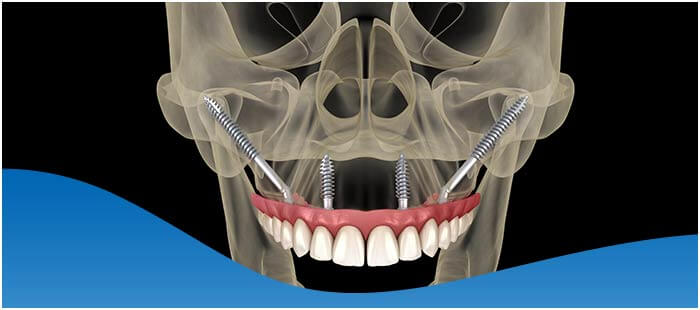
Traditional dental implants are shorter in length compared to those known as zygomatic implants, which are inserted into the cheekbone (zygoma) rather than the jawbone.
Those who have suffered significant bone loss in the upper jaw may benefit from their use.
Mini dental implants
Micro dental implants are a more compact alternative to standard dental implants. They can be used to secure a denture or a partial denture in place.
Traditional implants have a lower minimum bone density requirement, making these an attractive alternative for patients who do not meet the criteria for traditional implants.
What Dental Implants Look Like
Dental implants look and feel like natural teeth. The implant itself is not visible because it is surgically placed into the jawbone.
The abutment extends above the gum line and is usually made of porcelain or another tooth-colored material to blend in with the surrounding teeth.
The restoration, such as a crown, bridge, or denture, is attached to the abutment and is custom-made to match the color, size, and shape of your natural teeth.
It is designed to look and feel like your natural teeth, so you can smile, speak, and eat with confidence.
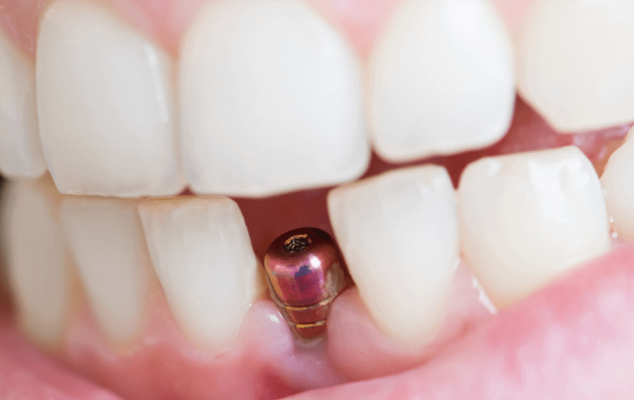
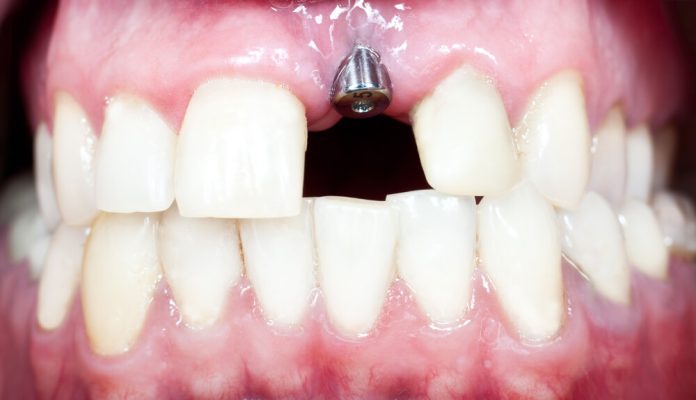
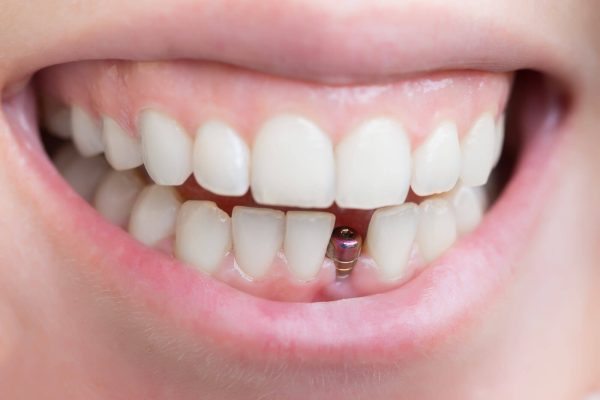
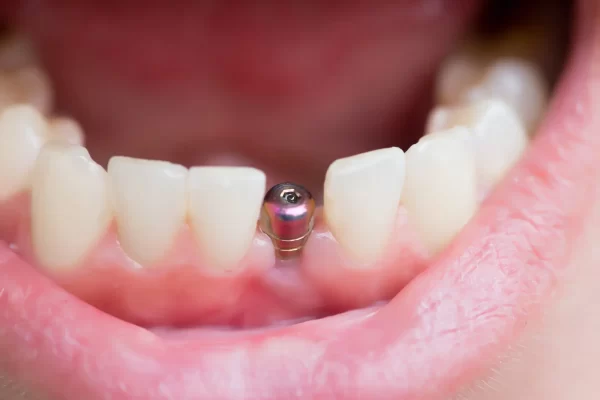
Here is a table comparing dental implants to other dental restorations:
| Dental Restoration | Appearance | Durability | Maintenance |
| Dental Implants | Looks and feels like natural teeth | Can last a lifetime with proper care | Brush and floss regularly, see the dentist for regular check-ups |
| Dentures | Artificial teeth that rest on the gums | Typically last 5-10 years | Remove and clean daily, see the dentist for regular check-ups |
| Bridges | Artificial teeth that are anchored to adjacent teeth | Typically last 5-15 years | Brush and floss regularly, see the dentist for regular check-ups |
| Crowns | Artificial tooth that covers a damaged or decayed tooth | Typically last 10-15 years | Brush and floss regularly, see the dentist for regular check-ups |
Maintenance and Care of Dental Implants
It is crucial to take appropriate care of your dental implants if you want them to continue looking and feeling their best for as long as possible.
The following are some recommendations for the care and maintenance of your dental implants:Brush and floss regularly: Just like natural teeth, dental implants require daily brushing and flossing to remove plaque and bacteria.
Use a soft-bristled toothbrush and non-abrasive toothpaste to avoid damaging the restoration.

- See the dentist for regular check-ups: Maintaining the health of your dental implants requires that you visit the dentist on a consistent basis for checkups. Your teeth will be cleaned and examined by your dentist, who will also look for any problems that may exist.
- Avoid hard, crunchy, or sticky foods: Hard, crunchy, or sticky foods can damage the restoration or abutment of your dental implants. Stick to softer foods and cut hard foods into small pieces before eating them.
- Quit smoking: Increasing the likelihood of implant failure and complications can be achieved by smoking. Giving up smoking is one of the best things you can do for the long-term success of your dental implants.
- Wear a night guard: If you grind or clench your teeth at night, wearing a night guard can help protect your dental implants from damage.
- Use a water flosser: A water flosser can help clean hard-to-reach areas around your dental implants and remove bacteria and plaque.
Youtube Video About Dental Implants Look
Final Thought
Dental implants are a great way to replace missing teeth since they offer a long-lasting and natural-looking alternative. The three primary components of them are the implant, abutment, and restoration.
Dental implants mimic the appearance and feel of real teeth, and the restoration is constructed specifically to complement your original teeth.
Be sure to brush and floss frequently, visit the dentist for checkups, and stay away from hard or sticky foods if you want to ensure the long-term success of your dental implants look.
You can have a stunning, healthy smile for many years to come by taking good care of your dental implants.
FAQ
Implants repair lost teeth in the jawbone. They maintain facial structures by avoiding jaw bone loss. This can avoid a depressed face from losing teeth.
Dental implants are sturdy, often stronger than natural teeth. Titanium and zirconia implants are robust and biocompatible. Implants need adequate care to last.
As dental implants are implanted in the jawbone and do not alter soft tissue, your face will not change after obtaining one. Nevertheless, bone loss from missing teeth may modify your facial shape. Dental implants look can prevent bone loss and restore face support.
Dental implants can improve your smile by filling missing teeth. If the implant is properly placed and aligned with your other teeth, it should not change your smile.
If not appropriately sized or positioned, implants may appear larger than natural teeth. If the implant is too deep or the crown or bridge is too wide, this can happen. Discuss your implant cosmetic issues with your dentist or implant specialist. To make the implant look more natural, they may modify its size or placement.




